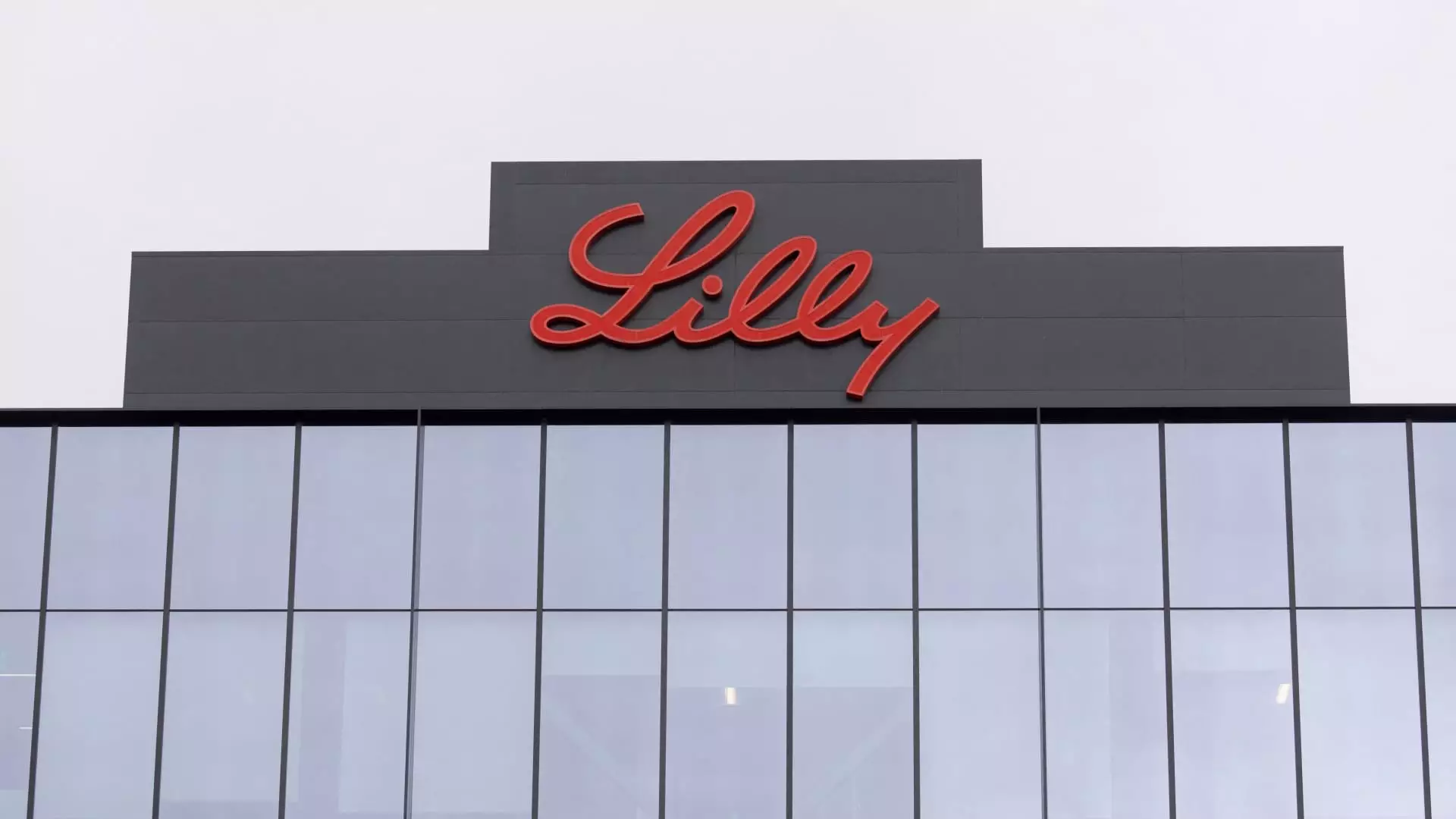The recent performance of Eli Lilly and Company, a leading pharmaceutical corporation, underscores a turbulent landscape for the firm as it struggles to meet profit and revenue expectations for the third quarter of the year. This downturn has raised concerns not only about Eli Lilly’s product lineup, particularly its weight loss drug Zepbound and diabetes treatment Mounjaro, but also about its overall financial health and future guidance.
Eli Lilly’s third-quarter earnings report was met with disappointment as the company’s adjusted earnings per share (EPS) came in at $1.18, significantly lower than the $1.47 expected by analysts. Additionally, Eli Lilly reported revenues of $11.44 billion, falling short of the anticipated $12.11 billion. These figures reflect a concerning trend, particularly when considering that revenue had increased by 20% year-over-year, showcasing robust growth prior to this quarter.
However, the financial landscape was marred by a staggering $2.8 billion charge linked to Eli Lilly’s acquisition of Morphic Holding, a company specializing in treatments for bowel disease. This substantial financial adjustment has led to a trimming of its full-year adjusted profit expectation from a previous range of $16.10 to $16.60 per share down to a new forecast of $13.02 to $13.52. Stock market reactions were swift; shares of Eli Lilly plunged more than 12% in morning trading, reflecting investor anxiety about the company’s stagnating revenue streams and higher operational costs.
The underperformance of Zepbound and Mounjaro—two pivotal products in Eli Lilly’s arsenal—has significantly influenced the company’s current standing. Zepbound generated $1.26 billion in sales, falling well below analysts’ expectations of $1.76 billion during its third full quarter on the market. Meanwhile, Mounjaro posted revenues of $3.11 billion, exceeding year-on-year figures yet still not meeting the projected $3.77 billion.
This shortfall highlights the complexity of the market dynamics surrounding these drugs. Although demand has far outstripped supply in the U.S. over the past year, supply chain constraints initially hindered sales growth. Despite improvements in availability—according to the FDA’s latest drug database—all doses of both Zepbound and Mounjaro are currently accessible in the U.S., challenges persist. Eli Lilly’s CEO, David Ricks, revealed in a recent interview with CNBC that the disappointing sales figures were further exacerbated by reductions in inventory levels among wholesalers rather than outright supply shortages.
As investors assessed Eli Lilly’s prospects, the reaction was notably adverse. It’s clear that the market expected not only stronger sales but also effective management of manufacturing challenges that had previously plagued the company. Although Ricks remains optimistic, stating that Eli Lilly is poised to enhance its production capacity by 50% for incretin drugs in the latter half of 2024, the company’s stock performance indicates a lack of confidence among investors.
Additionally, Eli Lilly’s decision to delay advertising for Zepbound due to previously unmet customer service standards has raised further questions about the company’s strategic planning. The decision to ramp up marketing efforts in November, while it may help boost sales in the future, does little to mitigate immediate concerns about revenue performance.
Adding to the complex scenario, Eli Lilly faces challenges from compounding pharmacies—businesses that manufacture customized medications. These pharmacies are pushing back against the FDA’s recent decision to lift the drug shortage status for the active ingredients present in Zepbound and Mounjaro. This brewing conflict could potentially complicate Eli Lilly’s market dynamics, especially as it attempts to secure its position against cheaper, unapproved alternatives that could siphon off its customer base.
While Eli Lilly has enjoyed a remarkable trajectory in the pharmaceutical industry, its recent financial challenges represent a pivotal moment for the company. Investors are undoubtedly watching closely to see how management responds to these setbacks—not just with respect to immediate revenue concerns but also in terms of addressing long-term strategic goals. The competition, particularly from Novo Nordisk, remains fierce as both companies strive to capitalize on the burgeoning market for obesity and diabetes treatments. Eli Lilly must act decisively to regain footing and reassure stakeholders of its capability to navigate these turbulent waters effectively.

